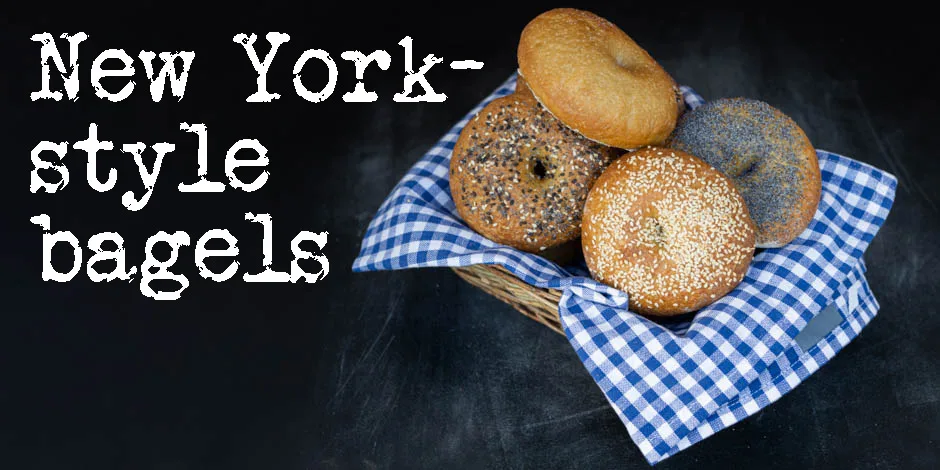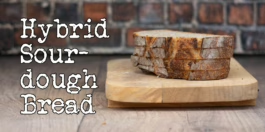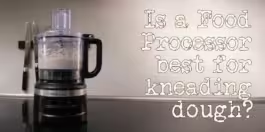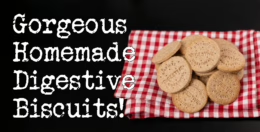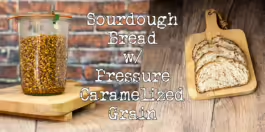Bagels are baked goods originating from the Jewish communities of Poland. It’s a donut-shaped roll with a crispy crust and a chewy interior. The most iconic bagels come from New York City, which has a sizeable Jewish population, so this is the standard that every good bagel aspires to achieve. This is my New York-style bagels recipe.
I have an excellent sourdough bagel recipe that has thousands of happy bakers, but I wanted to recreate the recipe using yeast because it just makes it so much easier to recreate at home.
Bagels are amazingly versatile. They are easy to use for breakfast, lunch, and dinner but are great for just snacking on all by themselves. Later in the article, I will give you a list of ideas on utilizing your homemade bagels.
If you are just here for the recipe, you can press the button underneath to be automagically transported to the recipe:
Jump to Recipe Jump to VideoWhy are bagels boiled?
There are two reasons why we boil our bagels. One is for texture, and the other is for taste.
The longer we bake the bagels, the chewier the interior gets. If you don’t want the bagels to be chewy but more of a soft crumb, you can boil them for 30 seconds on each side. If you are into super chewy bagels, two minutes is the place to go, but I honestly think that 1 minute on each side is a happy medium.
The bagels should be boiled in an alkaline solution for that authentic taste, just like pretzels, but not as strong, though. The way we make the solution alkaline is by adding food-grade lye—about 3 grams pr. 2 liters of water.
Can I substitute food-grade lye when making New York-style bagels?
The problem is that food-grade lye is not easily available for the home baker, so what can you do? I’ve seen people suggesting adding baking soda, which is mildly alkaline, to the water, but the taste just isn’t right, so what can you do?
It’s really easy, though. Baking soda is sodium bicarbonate, but by heating it for an extended period, you can turn it into sodium carbonate, which is more alkaline and also has a much more authentic taste.
So bake 100 grams/⅔ cup of baking soda spread thinly on a parchment-covered baking sheet. Bake for an hour in the oven set to 120°C/250°F. Store in an airtight container, and it will stay good for as long as your baking soda is good for,
Please use gloves when handling the baked baking soda since it can irritate your skin.
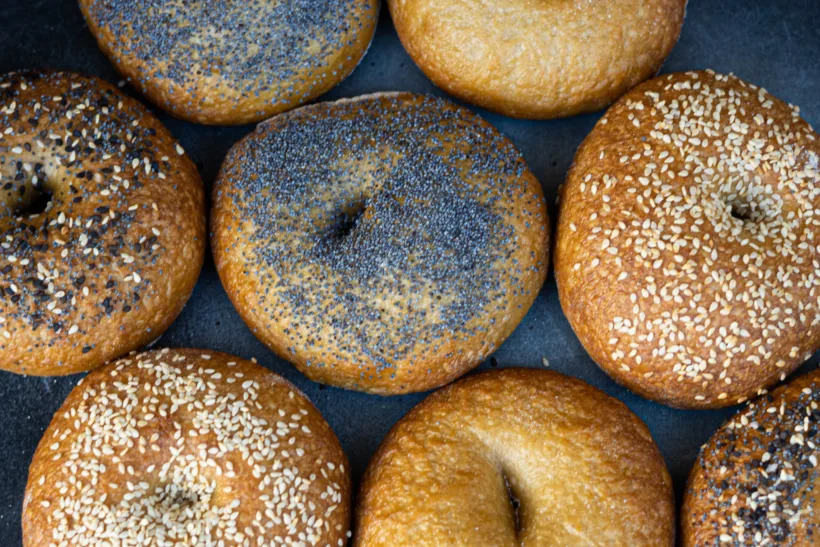
The dough in this New York-style bagels recipe
Vitals
| Total weight | 1006 grams |
| Pre-fermented flour | 51.6% |
| Hydration | 58.1% |
| Yield | 8 bagels |
The dough
The dough in this New York-style bagels recipe has a simple composition. Only bread flour, water, salt, a bit of yeast, and barley malt syrup, which also is essential for that authentic taste.
The hydration of the dough isn’t essential, but the texture of the dough is. The amount of flour here is my guesstimate on how much is needed for the right feel. You’ll need a dough that’s supple and pliable but not even tacky. If you put your hand on the dough and lift it, it shouldn’t stick at all, but the dough shouldn’t be dry and crack either.
We use very little yeast since most of the fermentation occurs in the refrigerator. About 2% salt overall, but if you like your salt, you can go to 3%. A little over 3% barley malt syrup is added, which gives that perfect bagel taste.
| Weight | Ingredient | Baker's Percentage |
|---|---|---|
| 320g | bread flour | 100% |
| 360g | water | 112.5% |
| 2g | instant yeast | 0.6% |
| Weight | Ingredient | Baker's Percentage |
|---|---|---|
| 300g | bread flour | 100% |
| 1g | instant yeast | 0.3% |
| 13g | table salt | 4.3% |
| 10g | barley malt syrup | 3.3% |
If you’d like to play around with the formula, change hydration, quantity, or other things, you can do that here in my Bread Calculator.
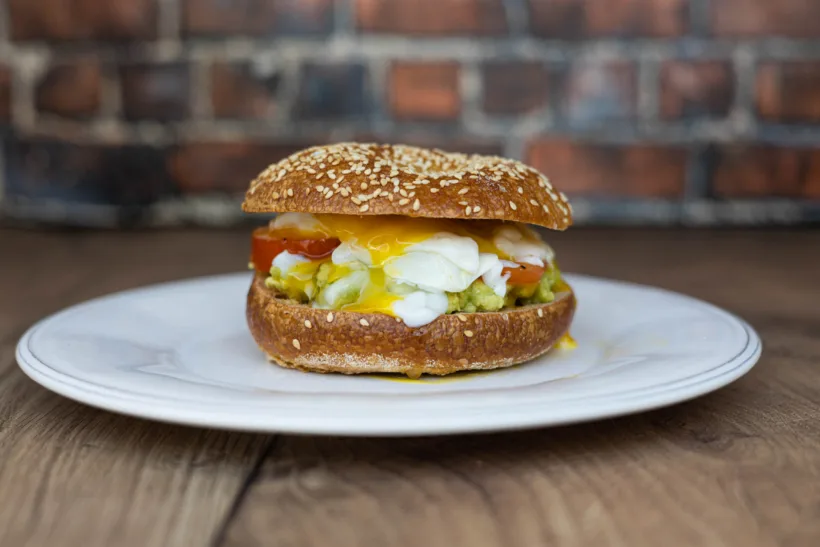
I can’t get barley malt syrup. What can I substitute with?
You can create a good taste substitute if you cannot get barley malt syrup.
Combine 125g/1 cup of dark ale and 125g/1 scant cup of dark brown sugar in a pot. Bring it to a boil, and then let it simmer uncovered until you have a very thick syrup. This can be used in place of barley malt syrup.
Stored in the fridge, it stays good indefinitely.
Incredible ideas for amazing bagels
If you are not sure what to put on your bagel, here’s a list of ideas:
- The “Classic” Bagel – Just a good layer of cream cheese.
- The “Foodgeek” Bagel – Toasted dark with an obscene amount of cultured butter.
- The “New York” Bagel – Cream cheese, smoked salmon, red onions, and capers.
- The “Breakfast” Bagel – Cream cheese, a fried egg, and a lot of crispy smoked bacon.
- The “Pizza” Bagel – Add tomato sauce, mozzarella, and your favorite pizza toppings on top (pineapple, anyone?) and toast in the oven for 10 minutes.
- The “Tuna Melt” Bagel – Mix tuna and mayo and spread each half. Add sliced tomatoes and slices of cheese and toast in the oven for 10 minutes.
- The “Ham and Cheese” Bagel – Add copious amounts of delicious cheese and excellent country ham on top – It can be eaten cold or toasted in the oven.
- The “Peanut Butter and Banana” Bagel – Toast the bagel, smear on some crunchy peanut butter and add slices of bananas. Add some chopped salted peanuts on top.
- The “Smashed Avocado and Poached Egg” Bagel – Toast the bagel. Mash the avocado with salt and pepper and put on the bagel. Top with a freshly poached egg.
- The “Cheese Burger” Bagel – Toast the bagel, smear it with mayonnaise and add a beef patty, two slices of mature cheddar, and shredded lettuce. Top with homemade ketchup.

The conclusion of this New York-style bagels recipe
So, what makes, in my opinion, the perfect bagel?
Here are my parameters:
- Crispy crust
- Chewy interior
- The right slightly sour feel on the crust
- The excellent malted taste is part of the flavor profile of an authentic New York-style bagel
This bagel recipe delivers in droves on all of those parameters; to top that off, the extended cold fermentation makes sure that every punch of flavor is extracted from the flour.
They are excellent in taste and super simple to make. They should be a part of your baking vocabulary and will amaze and delight anybody you serve them to.
Go ahead, make my bagel!
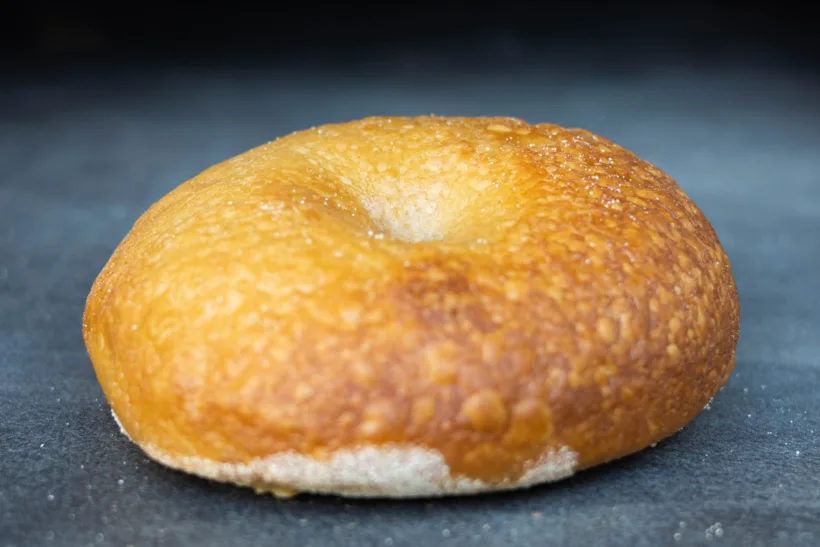
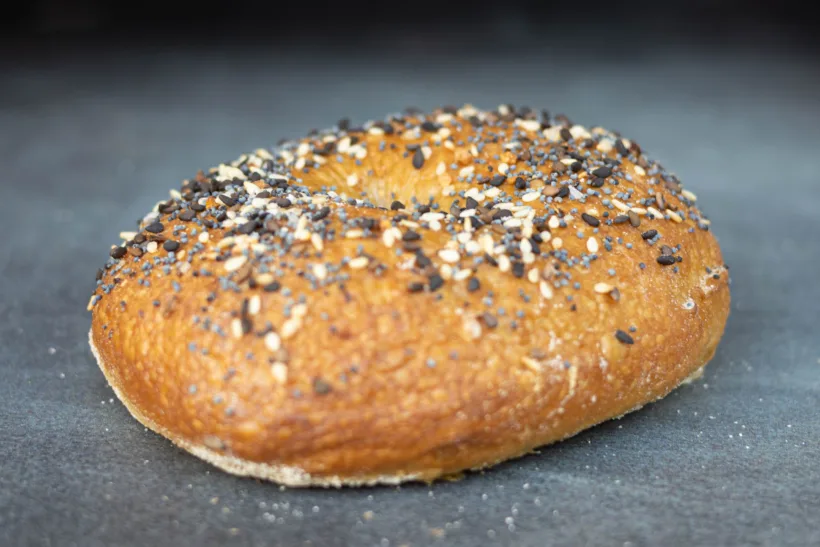
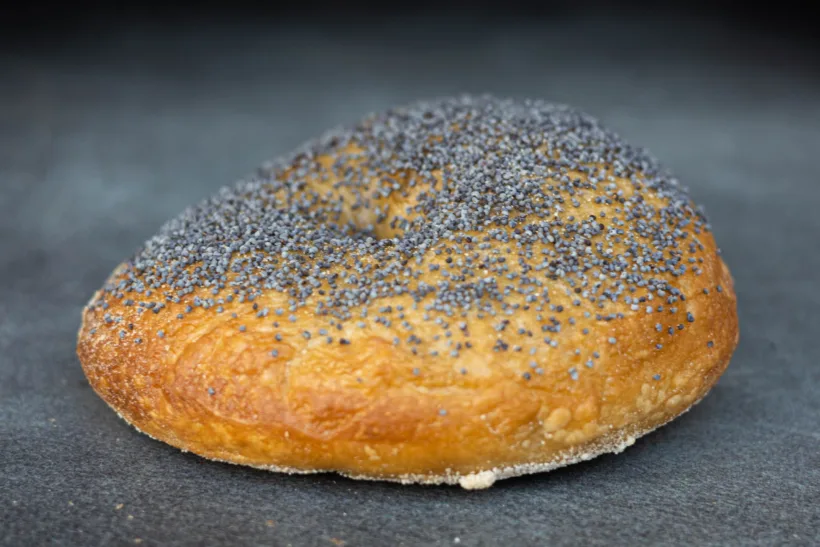
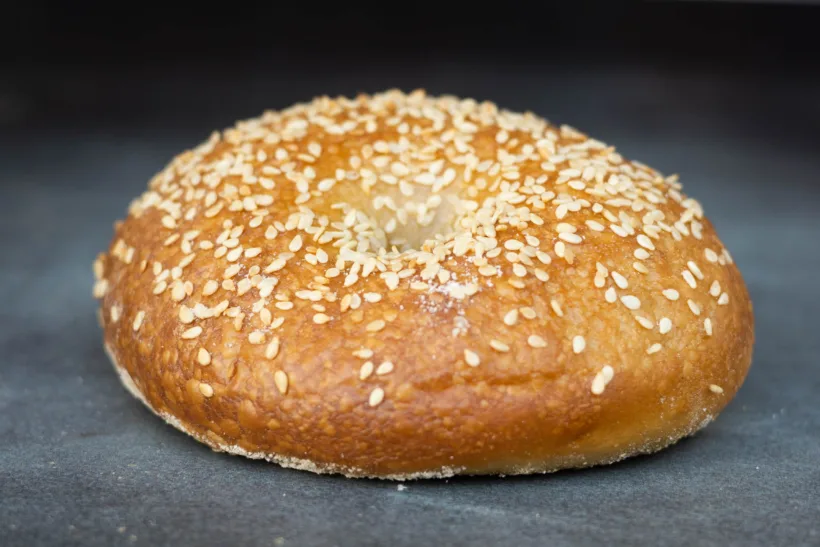
Please share this New York-style bagels recipe on social media
This is my recipe for New York-style bagels. If you like the recipe, please consider sharing it with like-minded bread lovers on social media.
If you make it and post it on Instagram, please tag me as @foodgeek.dk so I can see it. That would make me very happy.
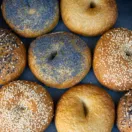
New York-style Bagels
Ingredients
Poolish
- 320 g bread flour
- 2 g instant yeast
- 360 g water
Dough
- 300 g bread flour
- 1 g instant yeast
- 13 g table salt
- 10 g barley malt syrup see article for an alternative
Water bath
- 2200 ml water
- 3 g food-grade lye or 50g baked baking soda (see article for details)
Instructions
Make poolish
- To a medium bowl, add bread flour and yeast. Mix it to distribute the yeast.
- Then add the water and mix it. Put the mixture somewhere warm for 2 hours.
Make dough
- On top of the poolish, add the yeast, the salt, and the barley malt syrup. Mix it until everything is distributed.
- Add about half of the bread flour and mix it in, adding more flour until you’re at a kneadable consistency.
- Then move the dough to your counter and knead in more flour until you have a nice supple dough. It should be slightly tacky but not dry.
Divide and preshape
- Then weigh the dough, and divide that weight by 8. Then divide the dough into eight equal portions. Shape each piece into a taut ball.
- Let them rest under a damp dishcloth for 20 minutes.
Final shaping
- Grab a baking sheet that will fit in your fridge. Put a piece of parchment paper on top and top that with semolina or coast cornmeal.
- To shape a bagel, flour your thumb and make a hole in the middle of a dough ball.
- Twist it around on your fingers, making the hole bigger. If you like bagels with a little hole, make the hole around 2½ cm/1 inches. If you want a big hole, go for 5 cm/2 inches.
- Spray some plastic wrap with baking spray and put it over the top, and let the bagels proof for 20 minutes.
- After 20 minutes, grab a bowl of water and submerge a bagel. If it floats within 10 seconds, the dough is proofed enough. If not, put the bagels away for another 20 minutes and retry. Keep going until you have a floating bagel.
- Then put it in the fridge overnight or for up to 2 days. The longer, the more taste.
Baking
- When ready to bake, heat your oven to 220°C/425°F.
- Add water to a pot and add food-grade lye. Alternatively, add baked baking soda.
- Bring the water to a boil.
- Add as many bagels as you can fit without them overlapping. Boil them for 1 minute on each side, or if you like them very chewy, go for 2 minutes on each side.
- While they are still wet, sprinkle them with whatever toppings you like. Then put them in the oven for 5 minutes.
- After 5 minutes, rotate the pans. If your oven heats unevenly, switch the top and bottom pans around.
- Lower the temperature to 200°C/400°F. Bake for about 20 minutes more, but test to see if they are to your liking during this time.
- Take them out and let cool on a wire rack, or for oven-fresh bagels, you can use them after about 15 minutes.



